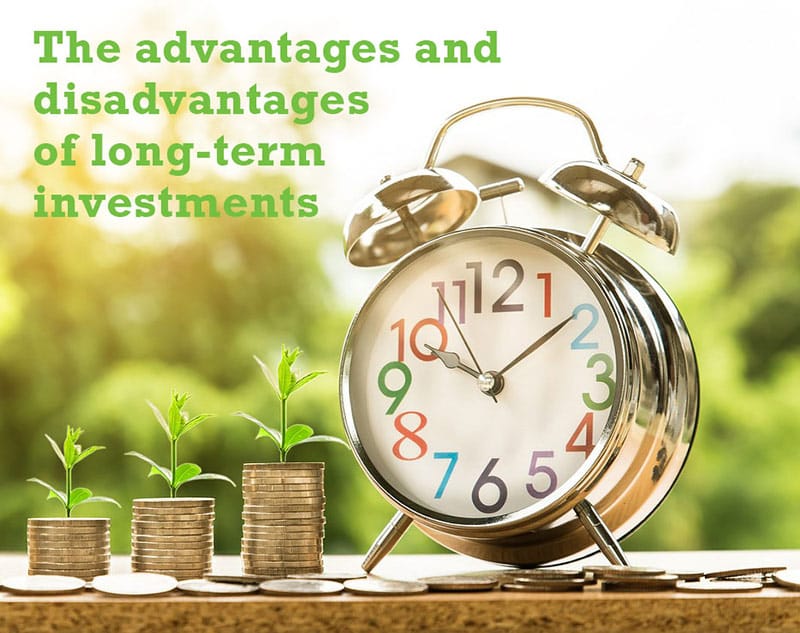What’s the deal with getting my money out?

Have you ever heard other yacht crew say that they are “locked into their investment?” Often, it’s said with concern.
But what do they mean? And how can you make sure the length of time you are committed to an investment suits your needs?
Broadly there are two types of investing, daily trading (where you are buying and selling all the time) and long-term investing. It’s possible to create wealth doing both, but for yacht crew, daily trading isn’t practical. After all, you have a day job on board the boat that requires your full attention.
Therefore, making an investment for a fixed period of time (medium- or long-term), so you can leave it to work away in the background while you get on with your life, is the better option.
How long you should tie your money up for is a matter of personal circumstances. The longer you can commit to an investment, the more likely you are to get a better return. The world’s greatest investor, Warren Buffet, is a long-term investor and he says you should never buy a stock you’re not prepared to hold for at least ten years. But does that suit you?
Know your commitment
Before you commit to a long-term investment, it’s very important that you are aware of the commitment involved.
Firstly, it’s very important to differentiate between long-term investing and long-term investment vehicles (products). Realistically anyone starting in the yachting industry, if they want to achieve life-changing financial goals during their career, they are going to need a financial plan/roadmap and they are going to need to continue investing for between 10-20 years.
However this does not mean that they will need an investment vehicle which matures in more than ten years. You can always continue investing after this time, but this way you have the option of taking all the money after ten years, continuing to invest or reinvesting the proceeds into another investment, property for example or an income producing structure.
Here at Yachting Financial Solutions, we do not think that Investments that mature after 20-25 years are suitable for yacht crew at all, because many leave the industry much earlier than this. They then find that they aren’t able to continue funding their investments. They are locked in for an unrealistic period and can’t access their money without substantial penalties.
Time in the market is the key to financial success
The longer you invest your money, the more likely you are to see a good return on it.
You only have to look at the stock markets to see how this works. Take the Dow Jones, the premiere US stock index. In January 2002, it stood at just under 10,000 points. With the exception of a dip during the 2008 financial crisis, it has grown steadily, in the 2010s especially. By January 2023, it had more than tripled in value and stood at over 33,000 points.
If you had invested for only a few years, you wouldn’t have made the far larger returns you would have made if you’d invested for a decade or more. That’s why investment professionals talk about ‘time in the market’ as being the main driver of financial growth.
Some investments oblige you to commit your money for a period of time
This is because they are designed to provide long-term benefits, such as a higher return, higher capital appreciation or higher income generation over time. If you take your money out earlier than you’ve agreed, the investment can’t provide the return you were hoping for. That’s especially true if you take your money out early on.
Imagine if you agreed to buy something you needed for a ten-year period, only for the seller to take it back after six months. You’re holding up your end of the bargain, but they’ve simply walked away. You’d feel pretty disappointed, to put it mildly. Maybe you’d even want some compensation from the seller for breaking the contract early?
Because some investments are designed to give a better than average return and are designed for longer-term investments, taking your money out early can incur higher fees than if you were stopping your investment in a shorter-term investment with lower returns or fewer benefits. Sometimes you may not be able to stop your investment for an initial period.
Advice: make sure you know how long you are committing your money for and what the potential costs might be if you pull the plug early on. Don’t invest money you think you will need in the next 1-2 years.
We would also reiterate never committing to an investment vehicle for longer than ten years. If you can and wish to continue investing after 10 years, you will certainly be able to, but limiting the time you tie up your money gives you options and access to your money, whilst giving it a sensible amount of time to grow.
Examples of restrictions
Let’s look at the kind of restrictions and fees you might encounter. By the way, it’s not all bad news. One of the benefits of withdrawal restrictions is that they have been shown to attract serious investors and convince them not to panic and withdraw their funds before they have had a chance to fully benefit from the investment’s potential returns.
However, sometimes life just throws you a curveball and you need that money for something else, which is why you should invest in a variety of different structures, including those with easy access to your money. Here is an overview of the restrictions and fees that may be associated with certain investments:
- Early withdrawal fees
Certificates of deposit (CDs) are a type of time deposit account offered by banks and credit unions.
They typically offer a higher interest rate than a traditional savings account, but they require you to keep your funds locked in for a set period of time, known as ‘the term’.
If you withdraw your funds before the term is up, you may be charged an early withdrawal penalty, which can be a percentage of the interest earned or a set amount. The penalty can reduce the amount of interest you earned, and in some cases may even eat into the actual amount of money you invested.
- Surrender charges
Common with annuities, which are a type of investment product offered by insurance companies that provide regular payments in exchange for an initial investment and also with investments structured as life assurance policies.
Both can be structured in different ways, but some may have surrender charges if you cancel the policy or withdraw funds before a certain period of time has elapsed.
The surrender charge may be a percentage of the account value or a set amount, and it normally decreases over time to zero.
The purpose of surrender charges is to encourage investors to keep their funds invested for a certain period of time, as doing so can provide greater potential returns.
- Redemption fees
These fees are often associated with mutual funds and exchange-traded funds (ETFs). These are investment vehicles that allow investors to pool their money together and invest in a diversified portfolio of stocks, bonds, or other assets.
Some mutual funds or ETFs may have redemption fees if you sell your shares within a certain period of time, typically ranging from a few days to a few months.
The redemption fee can be a percentage of the amount redeemed or a set amount, and it is intended to discourage investors from making short-term trades that can disrupt the fund’s investment strategy.
- Lock-up periods
Some investment funds have a lock-up period, which is a period of time during which investors are not allowed to withdraw their funds.
The lock-up period can be several years or more, and it is intended to give the fund managers time to carry out their investment strategy without having to worry about redemptions.
Lock-up periods can be good for both the fund managers and you, the investor, as they allow the managers to make longer-term investments and avoid having to sell assets prematurely to meet redemption requests.
It’s important to read the investment’s prospectus or offering documents carefully to understand any penalties or restrictions that may apply. Your financial planner will explain these to you. Key here is that by committing your money for a longer period of time, you will be providing the investment and fund managers the time to do their jobs and get you the biggest return possible.
From your side, if you aren’t comfortable committing your money for a longer period of time, make sure your financial planner is aware of that and opt for shorter term/ open ended investment vehicles, where you can access your money at any time without penalty or minimal penalty. They do exist. The most sensible option is to look at a variety of investments both long and short-term and invest in a mixture of both. Long-term investments (ie. ten-year investments) can be very profitable, but will only work best if you are willing and able to commit for ten years to the investment.






